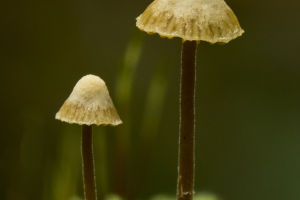Nahargarh Fort Jaipur, also known as the Tiger Fort, stands as an iconic historical edifice in the vibrant state of Rajasthan, India.
Nestled within the enchanting city of Jaipur, this majestic citadel is often referred to as the "Pink City" due to its predominant use of pink sandstone in construction, bestowing it with a mesmerizing pink hue that comes alive under the golden rays of the sun.
History:
Jaipur Nahargarh Fort, with its roots entrenched in the 18th century, stands as a testament to the vision of Maharaja Sawai Jai Singh II, the first Maharaja of Rajasthan.
This visionary ruler, not only a preeminent leader but also a renowned mathematician, was credited with founding the city of Jaipur. The construction of this magnificent fort commenced in 1727, a testament to the royal dedication, and it took approximately six years to reach its completion.
The fort was conceived to supplant an earlier structure, a response to the burgeoning population, and a desire to provide improved living conditions.
Architectural Style:
Nahargarh Fort is a harmonious blend of Rajasthani and Mughal architectural styles, showcasing quintessential features of Indian design. The intricate details, graceful domes, soaring spires, mesmerizing patterns, grand colonnades, and ornate decorations converge to create an architectural masterpiece.
Structure and Features:
Nahargarh Fort's sprawling expanse encompasses multiple courtyards, palatial edifices, lush gardens, and captivating museums. Among the notable landmarks and features are:
The main entrance to the fort, a regal gateway, leads visitors into the first courtyard.
Hawa Mahal, a veritable jewel within the fort's crown, is adorned with numerous intricately carved windows designed for the royal women to relish the sights and sounds of city life while maintaining their privacy.
Other palaces housed within the fort, such as the Jacques Sudes Palace and Cimbal Palace, all exude abundance with their exquisite interior decor and awe-inspiring architectural design.
The City Palace in the confines of Jaipur Nahargarh Fort is a repository of royal treasures and a museum that meticulously preserves and showcases the rich history and vibrant culture of Rajasthan.
Culture and Tourism:
Jaipur Nahargarh Fort has solidified its status as one of Rajasthan's most sought-after tourist destinations. Drawing visitors from every corner of the globe, the fort offers a captivating window into the tapestry of Indian culture, history, and architectural marvels.
The fort is the backdrop for a multitude of cultural events and festivities held throughout the year, providing a vibrant showcase of Rajasthan's traditions and customs.
Protection and Preservation:
As a cherished part of India's cultural heritage, Nahargarh Fort receives diligent protection and maintenance under the aegis of the government.
Conservation efforts include regular upkeep, meticulous restoration work, and safeguarding of precious artifacts. The fort also adheres to designated visiting hours, ensuring tourists have the opportunity to explore this architectural gem.
Nahargarh Fort Jaipur serves as a living embodiment of India's illustrious historical and cultural heritage. Its architectural finesse and ornate embellishments bear testimony to the grandeur and abundance of a bygone era.
For those planning a visit to Jaipur, a journey to this fort is an absolute must to immerse oneself in the rich tapestry of India's history and culture.


